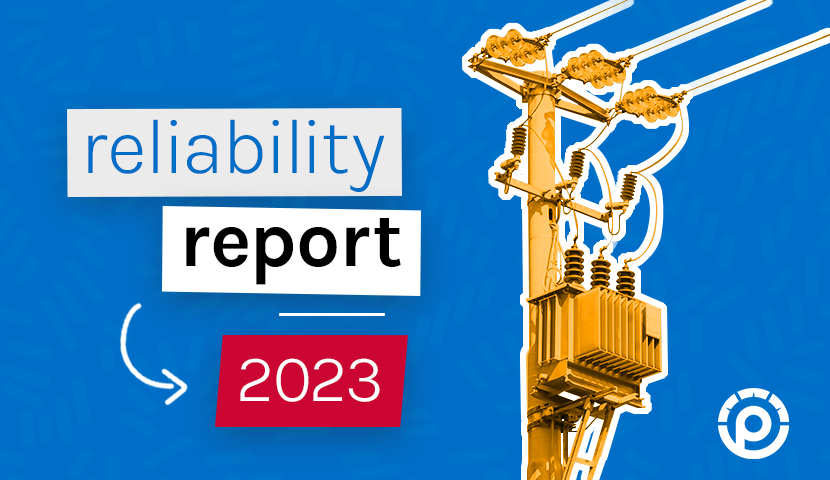About the Program:
1. What is the Solar Energy Storage and Management System (SEMS) Pilot Program?
SEMS pilot program is the partnership between the City of Oshawa, New Energy and Industrial Development Organization (NEDO) and Oshawa PUC Energy Services (OPUCES) that will bring a SEMS pilot project for approximately 30 homes in Oshawa.
2. How does the SEMS look like?
The system will include a solar PV array (6-7 kW) connected behind the meter, lithium ion batteries (10 kWh) and a hybrid inverter (5.5 kW) that will control the flow of power between the PV array and the battery bank. The solar panels will be installed on the roof and battery and hybrid inverter will be installed inside the home (basement, garage etc.).
3. Are ground-mount solar panels eligible under the pilot program?
Ground-mount solar panels are not eligible under the pilot program.
4. What is the pre-qualifying requirements for a home to participate in the pilot project?
To qualify to participate in the SESM pilot, the participant must be the home owner of the residence. Please see the document “Participant Recruitment – Pre-qualifying Requirements” for home eligibility criteria.
5. Does the property qualify if it is register to a business or an organization?
The pilot is open to only residential properties in the City of Oshawa.
6. How to submit recruitment application for the pilot project?
Before submitting the application for recruitment; interested home owners are requested to go through the documents – “Participant Recruitment – Pre-qualifying Requirements” for home eligibility criteria.Interested home owners can submit the application to OPUCES via email (SEMS@opuc.on.ca) or by visiting OPUCES office (100 Simcoe St. S., Oshawa, ON L1H 7M7); starting 9:00 AM, 24th July, 2015. No application will accepted prior to the specified date and time. Applications submitted before the specified date and time will be considered ineligible.
A list of eligible home owners will be prepared on first come – first reviewed basis. OPUCES representative will visit the home to further verify the eligibility. A final list will be prepared on the basis of fully qualified applications and home owners will be notified. OPUCES reserves the right to make any changes to the Participant Recruitment Criteria.
7. Do I have to pay anything?
The selected home owner will sign an ‘Energy Services Agreement’ (ESA)with OPUCES for the period of 4-5 years. As a part of this pilot project, installation and commissioning of the SEMS and maintenance during the term of the ESA will be done at no cost to the selected 30 home owners.
In return, the home owner will share residential electricity consumption data with OPUCES and other project partners and provide access to the SEMS to OPUCES designated visitors with prior notice.
During the term of the ESA, the SEMS will be owned by the pilot project partners (NEDO, OPUCES). After the ESA term, the ownership of the SEMS will be transferred to the home owner and the home owner will take all the responsibility of the SEMS.
8. Will my electricity bill be reduced by installing SEMS?
Yes. For the solar energy generated; either being used inside home or stored inside the battery, there will be no cost to the home owner. This is a direct reduction to home electricity bill. In addition, access solar energy generated will flow back to utility distribution grid and will be credited in monthly energy bill according to ‘Net-Metering’ program.
9. What is the catch?
There is no catch! OPUCES is installing SEMS as a part of pilot program in collaboration with City of Oshawa and NEDO.
10. Will I receive any monthly payments for participating in this pilot program?
No. the home owner will not receive any payment for participating in this pilot program.
11. My roof has slate/clay/metal shingles. Does it qualify?
No, unfortunately a roof with those types of shingles are not eligible.
12. Can I use the solar generated electricity inside my home?
Yes. Solar generated electricity will be first used inside home then stored in the lithium ion battery and excess will flow back to the Oshawa PUC distribution grid.
This electrical connection to Oshawa PUC distribution grid will be done according to the Government of Ontario net-metering program. The Ontario Government is taking steps to promote the development and use of renewable energy.Net metering allows you to send excess electricity you generate from renewable resources to the distribution system for a credit toward your energy costs. In essence, it’s a “trade” of electricity you supply against electricity you consume.The benefits of net-metering will go to the home owner.
For more information please visit Ontario Energy Board website;
13. Can I use solar energy and energy stored in the battery during power outage?
Yes. In case of power outage from local distribution company grid; solar energy and energy stored in the battery can be used within the home. Solar inverter is rating is 5.5 kW and Lithium Ion battery rating is 10 kWh.
14. How long will the battery power last during a power outage?
For the selected home, during design phase, electrical load will be pre-determined that can be turned ON during power outage from distribution grid. Solar and battery energy will keep on providing power to the pre-determined load. Example of pre-determined load can be refrigerator, few lights bulbs, computer receptacle etc.
In absence of sunlight, if used wisely, battery can provide power to the pre-determined load for a few days.
15. What happens if I sell the house?
While OPUCES does not recommend installing it on homes intended for sale within 5 years. The sale will include the transfer of equipment and obligation to participate in the program.
16. How many times do you visit my property for inspection and/or maintenance?
This is a pilot project. The home owner should expect frequent visits for inspection and maintenance activities Home as per manufacturer’s specifications. This will be defined in the ESA.
Also, there will be frequent visits from the project partners. One week advanced notice will be provided to the home owner for these type of site visits. Home owner is expected to accommodate this request except for emergency situations.
Home owners will be enrolled in the vendor 24*7 customer support.
17. Who is responsible for roof maintenance?
General roof maintenance remains home owner’s responsibility. OPUCES and project partners are responsible for any damage to the roof caused by the solar panels for the initial 4-5 years. After the ownership of the SEMS is transferred to home owner, the home owner will responsible for all roof related maintenance.
18. Who will own the equipment and when ?
The SEMS will be owned by OPUCES or project partners for a period of initial 4-5 years. The ownership of the SEMS will be transferred to home owner after this period.
19. Who is responsible for the equipment including insurance?
The insurance will be covered by OPUCES or project partners for the initial period of 4-5 years. After this period, the ownership of the SEMS will be transferred to home owner and the home owner will be responsible for insurance.
However, as a part of qualification process, the home owner is responsible to inform and register the SEMS with the existing insurance company.
20. Will the equipment make any noise?
The SEMS will comply with the industry standards for noise level.
21. Because you are using the internet connection, will the data volume cause any concerns for my internet?
The internet for home owner will definitely increase due to SEMS data transfer. The home owner is responsible for providing reliable high-speed internet connection and also responsible for any additional cost for internet usage.
The SEMS monitoring system uploads small amounts of data to a web server at 1 minute intervals. The total amount of data transmitted is less than 5 GB a month.
22. Are there any software programs available for the home owner to monitor the system and we have access?
The home will be able to view SEMS activities from the monitoring panel installed inside the home.
23. Is this equipment safe and approved for use in Canada and specifically Ontario?
The equipment has all necessary approvals to be installed in Canada and specifically in Ontario. OPUCES and project partners will get all required installation approvals; including approval from ‘Electrical Safety Authority’, before starting the installation.
24. What support is available after I own the equipment?
Home owners will be enrolled in the vendor 24*7 customer support.
25. What will it cost to remove the equipment?
After the initial period of 4-5 years, the ownership will be transferred to home owner. The removal cost would be a typical cost for removing for solar panels and other equipment. Since this is a pilot project, battery disposal cost is not known at this stage.
26. What will it cost to replace the equipment?
For the initial 4-5 years, the home owner is not responsible for any replacement cost due to equipment manufacturing defect. Since this is a pilot project, it is difficult to assess replacement cost after standard warranty period is over.
27. Who will make sure that the roof will be able to hold the equipment?
Pre-installation inspections will be done and municipal permit for installing solar panels will be obtained by OPUCES and project partners.
28. Are the solar panels screwed or clamped to my roof?
The solar panels are both clamped and screwed onto your roof to ensure solid attachment. OPUCES and project partners design the SEMS to ensure there is no damage to your roof or any other part of your house during installation and in the years to come.
29. Will the solar panels cause structural damage to my home?
No. Before OPUCES installs a solar system, it sends a certified technician to do an on-site assessment after which a Professional Engineer also conducts and stamps a detailed study of your roof. They will determine if the house is structurally sound, and if the roof is in good condition. If home roof is not in good condition, and/or home is not structurally sound, OPUCES will not install a SEMS.
30. How many panels are put on my roof?
About 30 solar panels will be installed. This produces enough electrical energy to power an average house in Ontario.
31. What is the size and weight of each solar panel?
Each panel is approximately 1 m x 1.6 m x 42 mm thick, weighing approximately 23 kg. A solar panel is smaller than a sheet of plywood and it weighs less than the combination of materials already on your roof.
32. If qualified and eligible, when can I expect the SEMS to be installed at my home?
OPUCES is expecting to install the SEMS for qualified and eligible homes before December 2015. However, this is a pilot project and the installation date may change without notice.














